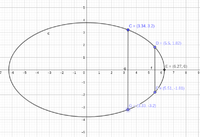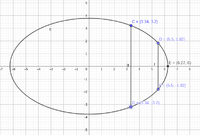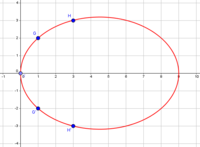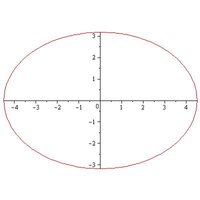datapioneer
New member
- Joined
- May 8, 2019
- Messages
- 7
I am trying to determine if there is a way to determine the foci of an ellipse given three points that lie on the ellipse: one of the endpoints of the major axis, and two other points on the ellipse. Is this even possible? I've attached a graph where I have defined an ellipse with points C, H, and an endpoint of the major axis F. The two foci are shown but are to be determined. They are not given. My hypothesis is that if one can determine point D, the endpoint of the minor axis of the ellipse (as shown in the attached graph), then one can construct a circle with center D and the circle will intersect the major axis of the ellipse at the foci. The problem is how to go about detemining the point D from only points C, H, and F.
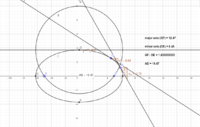

Last edited by a moderator:

